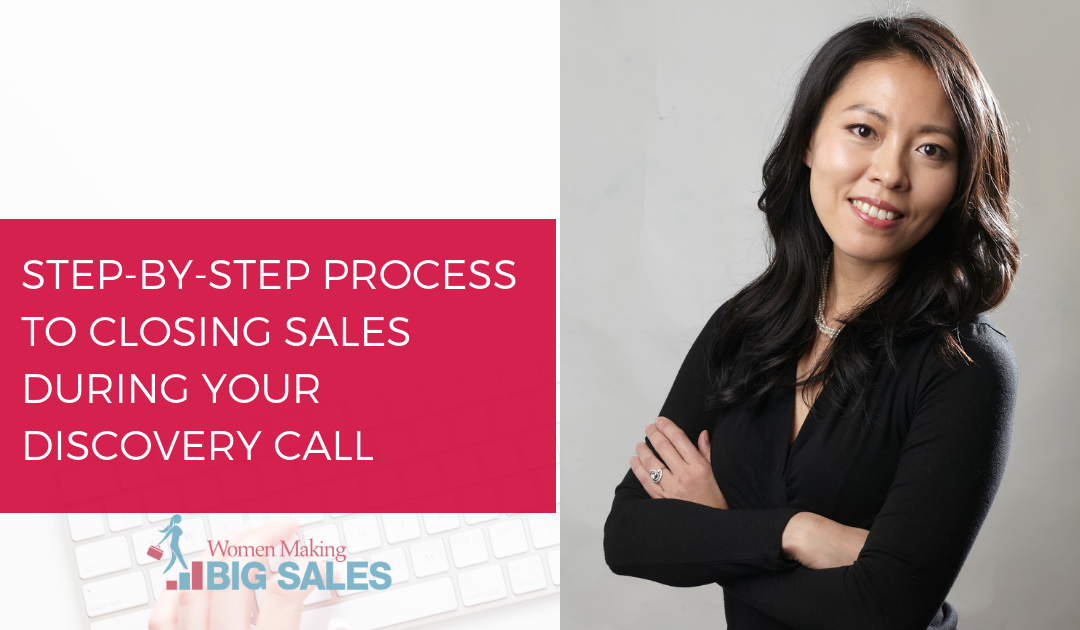Congratulations!
You’ve invested your time into networking and creating valuable resources to demonstrate your credibility! Nice! You have gained the attention of your potent clients! Awesome!
Finally, they have agreed to connect with you either over the phone or face-to-face. This is the scary part. The next step is to figure out how to convince your prospect(s) to work with you and close those sales.
But you start to wonder…
What if I sound desperate?
What if I am too pushy and I sour the relationship?
What if they say no?
How do I ask for their business confidently?
Today, let me share my simple step-by-step template to asking for a sale. I have used this template for over a decade.
The reason I love this template so much is that it is client-centric and puts you in the position of acting as their trusted advisor. The moment you take on this role (rather than just someone trying to sell something) you will no longer come off as “pushy”.
When you follow this process correctly and act professionally, you will build credibility with your prospects. The key to building trust lies in taking the time to listen to your prospects – I mean really listen.
Another great aspect of this template is that you can use it in any sales situation.
- A coffee date with your potential client
- Discovery/strategy call
- Official sales meeting (with executives in big companies!
…The list goes on.
Be sure to check out this template before your next encounter with your prospect(s). Make sure you are well prepared for your meetings so that you don’t miss your next big sale!
Let’s get straight to the template.
(Want to know what to say at each stage? Click here for my complete sales script.)
Step 1: introduction
There are two main purposes for this stage:
- Connecting: Connect with your prospects so that they feel comfortable with you.
- Asking for permission: Get your prospects’ permission to proceed to the next stage; ask them questions in order to get to know their challenges. Asking for permission will show your prospects that you respect them and their boundaries. This will also help them mentally prepare for a more in-depth conversation about themselves and their business. (See my sales scripts for more details!)
Step 2: Discover challenges
The primary purpose of this stage is to identify the challenges of your potential clients. You want to find the biggest and most urgent challenges your potential clients are dealing with.
A great mental exercise is to imagine your prospect is your best friend, in distress. This stage is not unlike a doctor trying to diagnose the illness of their patient.
Here is an example of a question to ask:
“What is your biggest challenge in _______ right now?”
Make sure you also confirm what their single most important challenge is by asking:
“Would you say that _______ is the biggest challenge you are facing right now?”
Typically, your prospect won’t be regularly asking themselves these questions, but rather dealing with the problems that come about because of them. So it may take some time for them to work it out. Exhibit your patience and encourage them to take their time.
Step 3: Bridging
This is often the most challenging step for female entrepreneurs.
How do you convince your potential clients that you are the person they should work with?
Trust and creditably are the two essential ingredients to convince your prospects of this.
You have started building trust in Step 2 – discovering their challenges. For Step 3, build credibility by bridging the biggest challenge you prospect faces with the unique benefits/solutions you can offer. To succeed at this stage, you need to identify the single most crucial and immediate challenge your prospect faces and link this to the strongest and most unique benefits you offer.
For example:
A Public Relations client I worked with identified that the biggest challenge of her prospect was getting the attention of fashion bloggers. My client had a rather close relationship with a number of fashion bloggers. She was able to bridge her prospect’s challenge with this unique benefit and successfully converted her prospect to a paying client.
Check out my Bridging Worksheet!
Step 4: Handling OBJECTIONS
Once you have introduced and explained your service, you need to be sure you have handled all the objections your potential clients may have at this time.
Encourage your clients to share their thoughts:
- hat do you think?
- Do you have any questions for me?
Don’t be afraid of objections. They will surface at this stage. Objections are just another type of communication your prospects will have for you. Listen to these objections. They are another way of expressing needs. Use them to refine and perfect your services.
Step 5: Ask for The sale
Once you have correctly followed Step 1 to 4 you may now naturally ask for a sale.
For example:
- “It sounds like we could work with each other; what do you think?”
(Want to learn 12 other ways to ask for a sale naturally? Check out my “Sales Closing Essential Kit” where I share my complete sales script to help you close sales naturally.)
Follow these 5 Steps and not only will you close more sales, but you will also feel more confident.
Remember, if your prospect needs some time to think about your offer, this is entirely normal – and does not equate to rejection. Continue to follow up with your potential client(s) and take the time to build trust.
You are more likely to have a successful relationship with your prospect when they are ready to buy.
To selling as a trusted advisor!
-Melinda


Recent Comments